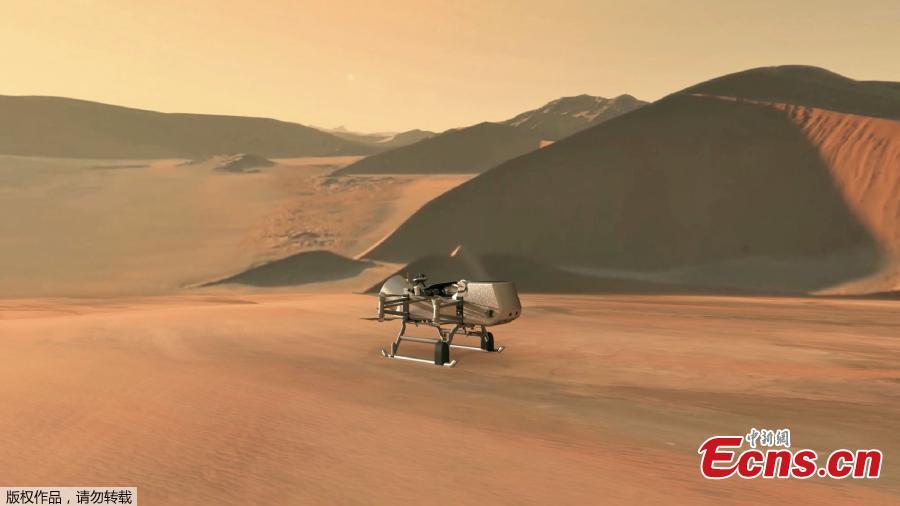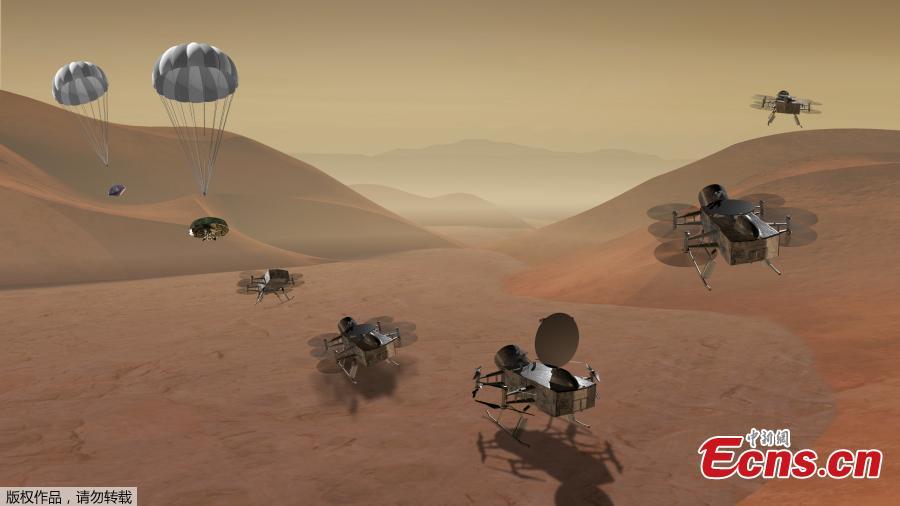
This NASA artist's illustration released June 27, 2019 shows NASA's Dragonfly rotorcraft-lander approaching a site on Saturn's exotic moon, Titan. Taking advantage of Titan's dense atmosphere and low gravity, Dragonfly will explore dozens of locations across the icy world, sampling and measuring the compositions of Titan's organic surface materials to characterize the habitability of Titan's environment and investigate the progression of prebiotic chemistry. Dragonfly will launch in 2026 and arrive in 2034. The rotorcraft will fly to dozens of locations on Titan looking for prebiotic chemical processes common on both Titan and Earth. Dragonfly marks the first time NASA will fly a multi-rotor vehicle for science on another planet; it has eight rotors and flies like a large drone. (Photo/Agencies)

This NASA artist's illustration released June 27, 2019 shows NASA's Dragonfly rotorcraft-lander approaching a site on Saturn's exotic moon, Titan. Taking advantage of Titan's dense atmosphere and low gravity, Dragonfly will explore dozens of locations across the icy world, sampling and measuring the compositions of Titan's organic surface materials to characterize the habitability of Titan's environment and investigate the progression of prebiotic chemistry. Dragonfly will launch in 2026 and arrive in 2034. The rotorcraft will fly to dozens of locations on Titan looking for prebiotic chemical processes common on both Titan and Earth. Dragonfly marks the first time NASA will fly a multi-rotor vehicle for science on another planet; it has eight rotors and flies like a large drone. (Photo/Agencies)























